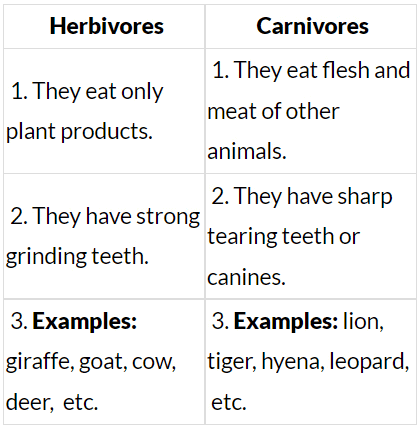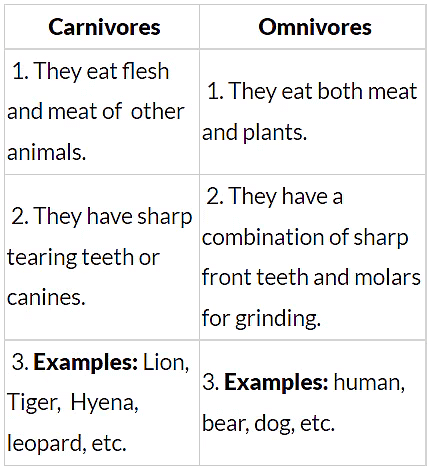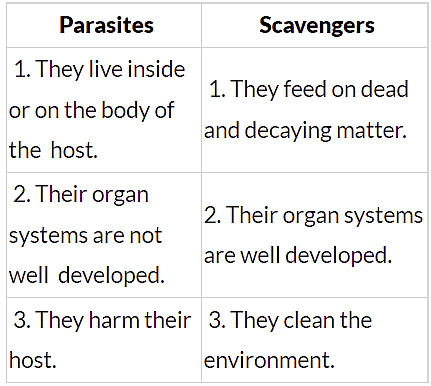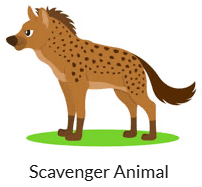Worksheet Solutions: Living Creatures: Exploring their Characteristics - 2 | Worksheets with Solutions for Class 6 PDF Download
True or False
(i) Scavengers help to keep the environment clean.
Ans: True
(ii) Lizards eat insects.
Ans: True
Short Questions Answers
Q1: Differentiate among the following:
(i) Herbivores and Carnivores
Ans:

(ii) Carnivores and Omnivores
Ans:

(iii) Parasites and Scavengers
Ans:

Q2: What are scavengers? How do they help the environment?
Ans: Animals that eat flesh of dead animals are called scavengers. For example, vultures, jackal, crow are common examples of scavengers. By eating dead animals, they help in keeping the environment clean. Otherwise our surroundings will be full stinking dead animals.
Q3: Do you find that all living beings need the same kind of food?
Ans: No, Different animals eat different kinds of food as per their needs.
Depending on kind of food they eat, animals are divided into three categories:
- Herbivores: Animals which feed on plants and plant products are called herbivores.
Example: cow, goat - Carnivores: Animals which feed on other animals are called carnivores.
Example: lion, tiger - Omnivores: Animals which feed on both plants and animals are called omnivores.
Example: crow
Assertion and Reason Questions
Q4: Assertion (A): Herbivores do not eat meat but they can eat fruits.
Reason (R): Cow is a herbivores animal.
(a) Both A and R are true and R is the correct explanation of A.
(b) Both A and R are true but R is not the correct explanation of A.
(c) A is true but R is false.
(d) A is false but R is true.
Ans: (b)
Q5: Assertion (A): Dog is an omnivores animal.
Reason (R): An omnivores animal is one that can eat both plant and animal products.
(a) Both A and R are true and R is the correct explanation of A.
(b) Both A and R are true but R is not the correct explanation of A.
(c) A is true but R is false.
(d) A is false but R is true.
Ans: (a)
FAQs on Worksheet Solutions: Living Creatures: Exploring their Characteristics - 2 - Worksheets with Solutions for Class 6
| 1. What are the main characteristics that define living creatures? |  |
| 2. How do living organisms adapt to their environment? |  |
| 3. What is the difference between plants and animals in terms of characteristics? |  |
| 4. Why is it important to study the characteristics of living creatures? |  |
| 5. How do scientists classify living organisms? |  |
















